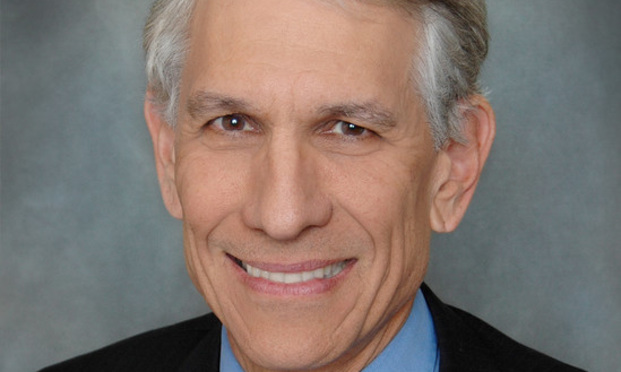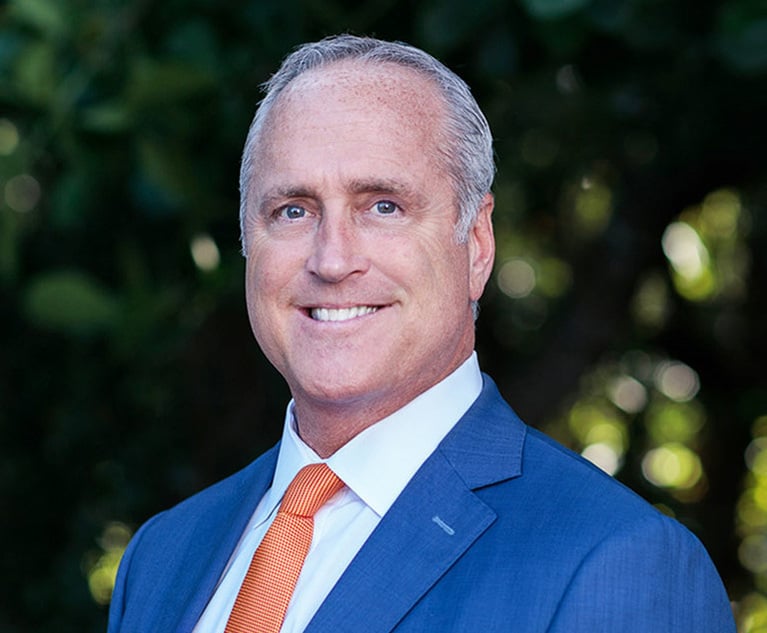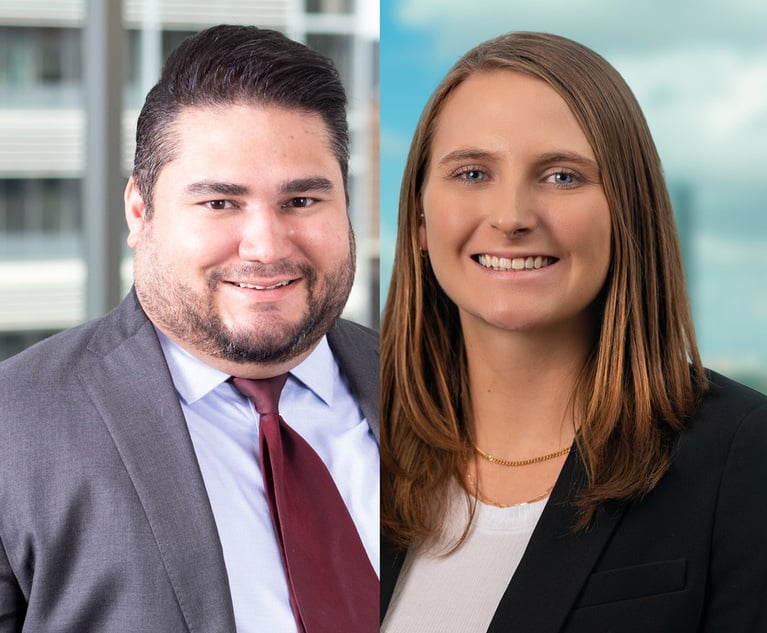Miami Leads Partnerships to Enhance Development of Opportunity Zones
In recent months opportunity zones (OZ) have become a major topic of interest among investors, developers, urban planners and community activists.
October 17, 2019 at 09:04 AM
6 minute read
 Ronald R. Fieldstone of Saul Ewing Arnstein & Lehr.
Ronald R. Fieldstone of Saul Ewing Arnstein & Lehr.
In recent months opportunity zones (OZ) have become a major topic of interest among investors, developers, urban planners and community activists. With a flood of investment expected to pour into OZ areas, some of which include economically depressed areas, many communities are exploring ways to ensure this influx of new capital will have an overall positive impact and benefit for the underprivileged residents who live in these areas.
On Sept. 27, the city of Miami—one of the nation's hottest OZ markets—hosted the Opportunity Zone Expo Conference, bringing together leaders and dignitaries from across the OZ spectrum, to address the OZ program and how governments can play a significant role in the development process. Dignitaries who attended the conference included Secretary of HUD Ben Carson; Miami Mayor Francis Suarez; the acting administrator of the Small Business Administration (SBA) for the United States, Chris Pilkerton; as well as national and local representatives of the SBA.
It was wonderful to hear thought leaders speak about the tremendous viability of the OZ program, with the city of Miami being featured as a key area for development in accordance with public/private initiatives that would benefit all parties concerned.
Miami mayor's comments about the tremendous expansion in the city of Miami of the OZ projects were particularly refreshing. His pledge of support for government incentives, job training, permit expediting and potential property tax relief, will encourage development in the city of Miami and in particular, in those areas that are in the process of being gentrified and in need of OZ capital to spur development.
One of the most important topics the dignitaries discussed was how the goal is to enable residents to live in a place where they gain independence and become self-sufficient. This would not only include providing affordable housing, but also job training and job placement in order to encourage government and private enterprise to encourage the OZ residents to not only live in the OZ community but become actively employed there as well.
The emphasis was on not only the financial benefits to investors as a result of the tax benefits to incentive investments in OZ, but the need for governments and their respective agencies to co-sponsor, incentivize and assist those projects that in particular support affordable housing as well as private businesses that provide valuable services and goods to the OZ community.
What struck me about Carson's presentation was the significant extent the OZ program has influenced HUD in the development of residential housing throughout the United States. Of the estimated $43 billion that have been committed to the OZ industry to date, an estimated 60% of these funds have been earmarked for housing projects. Multiple federal agencies are involved in the OZ program and that in HUD and other government agencies are collaborating in order to make the OZ program viable to ensure that the government agencies are actively involved and encouraging the program to prosper. This includes new incentives for OZ projects, with special underwriters assigned in order to reduce the processing time and grant application points to reduce the actual costs of obtaining HUD financing.
Carson further advised that on Sept. 17, the National Opportunity Zone Academy was established with funding by the Rockefeller Foundation.
A strong emphasis on promoting affordable housing is essential. It was noted that home ownership has been dropping in general, and at a much higher rate among the lower-income population. Therefore, rent and mortgage subsidies are required to provide affordable housing to those residents who otherwise cannot afford to remain a resident in the OZ area. This emphasis on affordable housing will enables residents in the OZ areas to be able to obtain these subsidies and grants while hopefully receive job training and employment opportunities at the same time.
As stated by the presenters, "housing problems are human problems." The concept is a win-win situation for all participants in the program.
Additionally, it was encouraging to hear about the role small businesses will play in OZ areas. The Small Business Administration offers programs that actually provide funding to small business owners who are not rich and without the aid of the SBA, would have no chance to develop businesses to promote commerce in OZ areas. In addition, the SBA stated its vision for the OZ program that will support the ecosystem and has different groups to advise and provide capital to OZ businesses. The SBA has a significant vision for the OZ program for small businesses that will support the ecosystem, including different SBA groups to advise and provide capital to OZ businesses.
Separate from the general business climate and the significant public support for the OZ program, I had a chance to speak with Daniel J. Kowalski, counselor for the Department of Treasury and an expert in the OZ program.
The biggest takeaway was that Kowalski indicated that the Treasury Department intends to issue final regulations in the near future (hopefully by year-end) to clarify existing uncertainties in the program, with the message that the department is very supportive of the policy issues.
Concerning the "substantial completion test" and the matching of expenditures for a building that had a prior use, the issue raised was whether the construction of additional improvements at a project or the expansion of amenities would count toward the substantial improvement requirements. For purpose of example, if a multifamily project had a purchase price of $10 million; $5 million allocated to land and $5 million to the building, then, at least $5 million would have to be spent on improvements to the building. The issue is whether additional amenities or the expansion of the number of units to be rented or used in the business at the same property would count towards the 100% improvement test. Kowalski indicated that under a strict reading of the regulations, those items would not be included, but he agreed that it was seriously being considered by the Treasury Department and would be addressed when final regulations are issued.
In Summary
It is apparent that various government agencies are taking a much more active role in the OZ industry in trying to establish a public/private partnership to enhance the development opportunities in their respective communities, as well as support from the Department of Treasury in an effort to make the final regulations proactive to the industry.
Ronald R. Fieldstone is a partner in Saul Ewing Arnstein & Lehr's Miami office. He is the chair of the firm's opportunity zones and qualified opportunity funds practice.
This content has been archived. It is available through our partners, LexisNexis® and Bloomberg Law.
To view this content, please continue to their sites.
Not a Lexis Subscriber?
Subscribe Now
Not a Bloomberg Law Subscriber?
Subscribe Now
NOT FOR REPRINT
© 2025 ALM Global, LLC, All Rights Reserved. Request academic re-use from www.copyright.com. All other uses, submit a request to [email protected]. For more information visit Asset & Logo Licensing.
You Might Like
View All

Don’t Forget the Owner’s Manual: A Guide to Proving Liability Through Manufacturers’ Warnings and Instructions
5 minute read

Trending Stories
- 1No Two Wildfires Alike: Lawyers Take Different Legal Strategies in California
- 2Poop-Themed Dog Toy OK as Parody, but Still Tarnished Jack Daniel’s Brand, Court Says
- 3Meet the New President of NY's Association of Trial Court Jurists
- 4Lawyers' Phones Are Ringing: What Should Employers Do If ICE Raids Their Business?
- 5Freshfields Hires Ex-SEC Corporate Finance Director in Silicon Valley
Who Got The Work
J. Brugh Lower of Gibbons has entered an appearance for industrial equipment supplier Devco Corporation in a pending trademark infringement lawsuit. The suit, accusing the defendant of selling knock-off Graco products, was filed Dec. 18 in New Jersey District Court by Rivkin Radler on behalf of Graco Inc. and Graco Minnesota. The case, assigned to U.S. District Judge Zahid N. Quraishi, is 3:24-cv-11294, Graco Inc. et al v. Devco Corporation.
Who Got The Work
Rebecca Maller-Stein and Kent A. Yalowitz of Arnold & Porter Kaye Scholer have entered their appearances for Hanaco Venture Capital and its executives, Lior Prosor and David Frankel, in a pending securities lawsuit. The action, filed on Dec. 24 in New York Southern District Court by Zell, Aron & Co. on behalf of Goldeneye Advisors, accuses the defendants of negligently and fraudulently managing the plaintiff's $1 million investment. The case, assigned to U.S. District Judge Vernon S. Broderick, is 1:24-cv-09918, Goldeneye Advisors, LLC v. Hanaco Venture Capital, Ltd. et al.
Who Got The Work
Attorneys from A&O Shearman has stepped in as defense counsel for Toronto-Dominion Bank and other defendants in a pending securities class action. The suit, filed Dec. 11 in New York Southern District Court by Bleichmar Fonti & Auld, accuses the defendants of concealing the bank's 'pervasive' deficiencies in regards to its compliance with the Bank Secrecy Act and the quality of its anti-money laundering controls. The case, assigned to U.S. District Judge Arun Subramanian, is 1:24-cv-09445, Gonzalez v. The Toronto-Dominion Bank et al.
Who Got The Work
Crown Castle International, a Pennsylvania company providing shared communications infrastructure, has turned to Luke D. Wolf of Gordon Rees Scully Mansukhani to fend off a pending breach-of-contract lawsuit. The court action, filed Nov. 25 in Michigan Eastern District Court by Hooper Hathaway PC on behalf of The Town Residences LLC, accuses Crown Castle of failing to transfer approximately $30,000 in utility payments from T-Mobile in breach of a roof-top lease and assignment agreement. The case, assigned to U.S. District Judge Susan K. Declercq, is 2:24-cv-13131, The Town Residences LLC v. T-Mobile US, Inc. et al.
Who Got The Work
Wilfred P. Coronato and Daniel M. Schwartz of McCarter & English have stepped in as defense counsel to Electrolux Home Products Inc. in a pending product liability lawsuit. The court action, filed Nov. 26 in New York Eastern District Court by Poulos Lopiccolo PC and Nagel Rice LLP on behalf of David Stern, alleges that the defendant's refrigerators’ drawers and shelving repeatedly break and fall apart within months after purchase. The case, assigned to U.S. District Judge Joan M. Azrack, is 2:24-cv-08204, Stern v. Electrolux Home Products, Inc.
Featured Firms
Law Offices of Gary Martin Hays & Associates, P.C.
(470) 294-1674
Law Offices of Mark E. Salomone
(857) 444-6468
Smith & Hassler
(713) 739-1250






